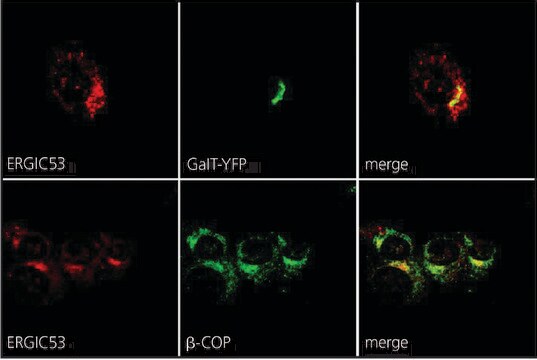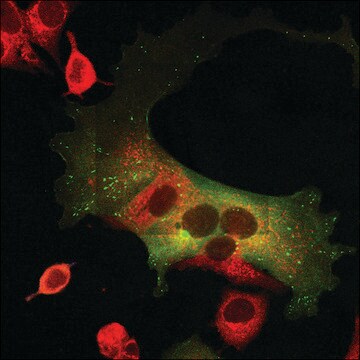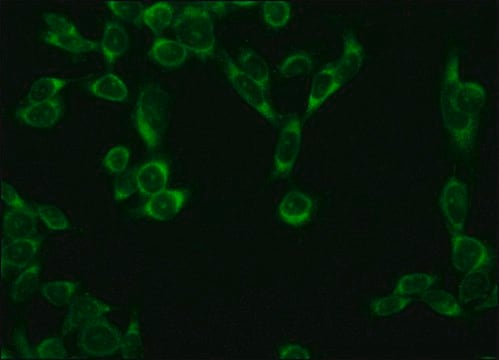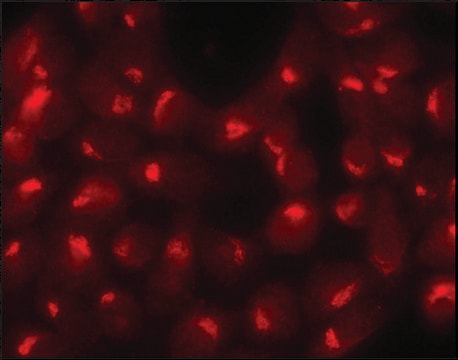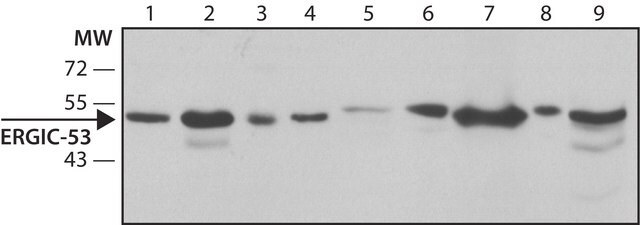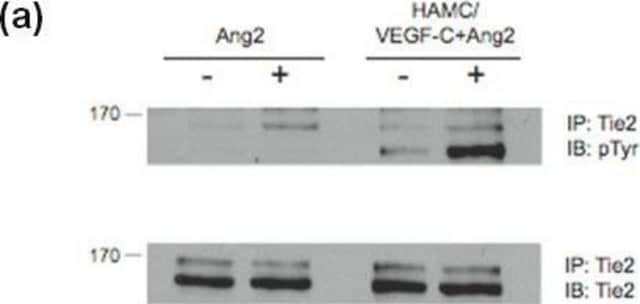G6160
Monoclonal Anti-β-COP antibody produced in mouse
clone maD, ascites fluid
Sinonimo/i:
Anti-BARMACS, Anti-COPB
Scegli un formato
Scegli un formato
About This Item
Prodotti consigliati
Origine biologica
mouse
Livello qualitativo
Coniugato
unconjugated
Forma dell’anticorpo
ascites fluid
Tipo di anticorpo
primary antibodies
Clone
maD, monoclonal
contiene
15 mM sodium azide
Reattività contro le specie
human, rat, hamster, monkey
tecniche
indirect immunofluorescence: 1:80 using cultured Chinese hamster ovary (CHO) cells
microarray: suitable
western blot: 1:1,000 using a preparation of stacked Golgi membranes from rat liver
Isotipo
IgG1
N° accesso UniProt
Condizioni di spedizione
dry ice
Temperatura di conservazione
−20°C
modifica post-traduzionali bersaglio
unmodified
Informazioni sul gene
human ... COPB1(1315)
rat ... Copb1(114023)
Categorie correlate
Descrizione generale
Specificità
Immunogeno
Applicazioni
Immunofluorescence (1 paper)
- analysis at a working dilution of 1:1000 using subcellular proteins from rat PC12 (pheochromocytoma) cells
- analysis of gradient fractions of cerebral microvessels to confirm the separation of plasma membrane lipid raft domains from intracellular membranous components
- detection of the Golgi marker protein β-COP in exosome-enriched extracellular microvesicles (eMV) preparations from untreated HeLa cells
It is suitable for immunostaining of β-coatomer, that is used as a intracellular, Golgi protein marker :
- to confirm that CD14 staining is localized to the cell surface of HAEC
- for examining the localization of Meltrin β in the Golgi apparatus and its vicinity in neurons prepared from developing dorsal root ganglia of mouse embryos
- in NB4 and NB4-LR1 cells to examine the colocalization of PKA regulatory subunits
- in CHO cells to examine colocalization of GFP-Rab24
It is suitable for use in cell-surface ELISA of human aortic endothelial cells (HAEC)
It is also suitable for western blot analysis at a working dilution of 1:1000 using a preparation of stacked Golgi membranes from rat liver, for indirect immunofluorescence at a working dilution of 1:80 using cultured Chinese hamster ovary (CHO) cells and for microarray.
Azioni biochim/fisiol
Esclusione di responsabilità
Non trovi il prodotto giusto?
Prova il nostro Motore di ricerca dei prodotti.
Prodotti correlati
Codice della classe di stoccaggio
10 - Combustible liquids
Classe di pericolosità dell'acqua (WGK)
nwg
Punto d’infiammabilità (°F)
Not applicable
Punto d’infiammabilità (°C)
Not applicable
Scegli una delle versioni più recenti:
Possiedi già questo prodotto?
I documenti relativi ai prodotti acquistati recentemente sono disponibili nell’Archivio dei documenti.
Active Filters
Il team dei nostri ricercatori vanta grande esperienza in tutte le aree della ricerca quali Life Science, scienza dei materiali, sintesi chimica, cromatografia, discipline analitiche, ecc..
Contatta l'Assistenza Tecnica.